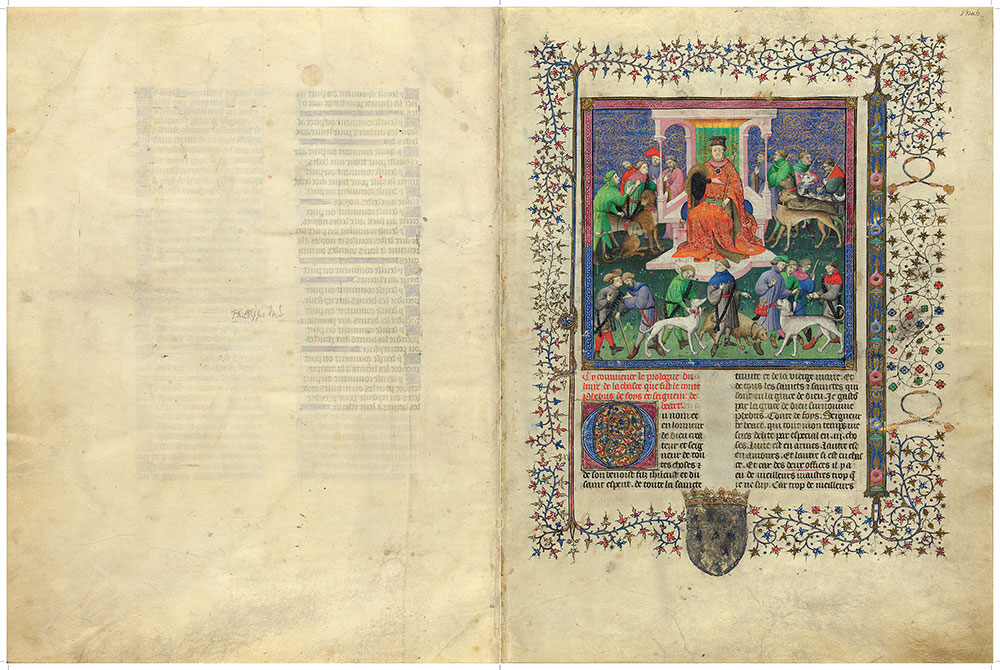
Livre de la chasse
Bequest of Clara S. Peck, 1983
Final Instructions Before The Hunt
Following a long medieval tradition going back to antiquity, the manuscript begins with an author portrait. Gaston Phoebus, however, is not shown writing, as might be expected, but giving final instructions before the hunt commences. He, as the rubric for the author's prologue states, was the Count of Foix and Viscount of Béarn. Here he is seated on an elaborate throne, in a composition that has been likened to a Maiestas Domini. Instead of nine angelic choirs, however, there are nine hunters and dogs instead of the symbols of the evangelists. At the bottom are eight more hunters (three are beaters) and three dogs. Among the dogs are beagles, greyhounds, spaniels, and alants. The miniature precedes the prologue, in which Phoebus invoked the Trinity and the Mother of God, gave Phoebus as his nickname, and spoke about the virtues of hunting. By overcoming idleness, the hunter avoided the seven deadly sins, could savor the fresh morning air, would experience the joy of a successful hunt, would enjoy the celebratory meal, and would sleep peacefully, undisturbed by bad dreams. Hunters would also live longer and enter Paradise when they die. The arms of the first owner at the bottom of the page have been replaced by those of the second, probably Francis II, Duke of Brittany (r. 1458–88), who first adopted the cordelière as an emblem.
Image courtesy of Faksimile Verlag Luzern
